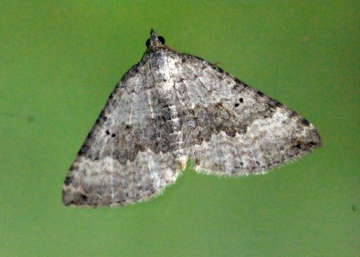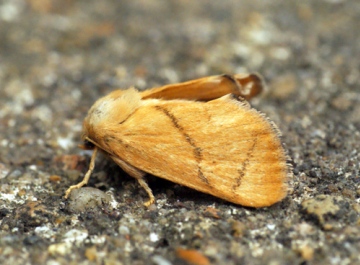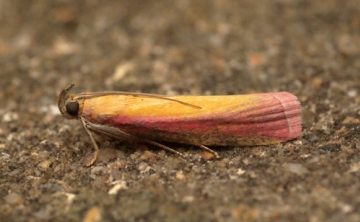Your Forum
This forum has now been more or less replaced by the Club's Facebook page at
The weblog below is for naturalists to use to report interesting sightings, ask questions, report on field meetings and generally post pictures and any information or questions generally relevant in some way to the wildlife and geology of Essex. You will need to
register and be
logged-on to post to the forum, and you need to upload pictures first, for use in posts.
Find out more
Water-plantains (Alisma lanceolata and A. plantago-aquatica)
I'm entering dangerous ground as I'm attempting to be intelligent today. Alismas have been frustrating me for some while as we occasionally have A. lanceolata Narrow-leaved Water-plantain at Walthamstow Marsh, but I've never satisfactorily identified it, until today! I was never quite satisfied with doing it on just leaf shape and flowering time-of-day and the only other character is trickily described as 'styles arising c 1/2 way up fruit or in upper half'. Unhelpfully these arise inside the whorl of fruits and so you can't see them without carefully picking the fruits apart. This is normally outside the limits of my patience but I think I've got there now (I'll add a photo shortly).
Common Water-plantain is very common in the marsh's ditches but Narrow-leaved Water-plantain only seems to occur some years and is of course much less common when it does. It is currently showing well in the northern most ditch on the marsh by Coppermill Lane, but will get sprayed along with the abundant Crassula helmsii at some point. I notice that it is and Essex RDB plant. I've no reason to think it isn't native here. Feel free to deflate me with my conclusions if you think I'm wrong.
Keeping with the marsh the Creeping Marshwort Apium repens is having another really excellent year and the Brookweed Samolus valerandi is on a new high too as I counted about 115 flowering plants today and there are probably a similar number of rosettes. These are at the opposite end of the marsh to Coppermil Lane. Now is a good time to visit, though it's worth letting the Rangers know you're doing so (Tel. 020 89887565) as it's a sensitive area and there are 7 cows, Belted Galloways, in the southern field now. There are of course plenty of other good plants to see.
Reagrds, David Miller Chalk Carpet - Grays Chalk Pit
After much anticipation in hopefully one day finding this species again, we had one! coming to Don Down's 125w MV Tripod set-up over a sheet.
I believe this has not been recorded sice 1984? at that same locality, so pleased it is still down there.
Other species of note included Festoon and several Oncocera semirubella



Spear Thistle deformity
Peter,
The deformity you photographed may have been caused by a gall. There is something similar depicted in Margaret Redfern's and Peter Shirley's 'British Plant Galls'. It is not my subject, however, and I suggest you get in touch with the County Recorder Jerry Bowdrey. His address and telephone number are in the 2009/10 Essex Naturalist or are available through the website.
Graham Smith Deformed spear thistle flower head
Over the past 3 months my wife and I have regularly walked a path at Highwoods Country Park, Colchester. At one point on the walk (TM009268) we have noted a spear thistle beside the path, just out of mower reach. When first seen we thought it was hosting a large caterpillar. Closer inspection revealed it to be a deformed flower head curled round in a crescent. This grew over time until it eventually caused the crown of the plant to collapse, and became a crescent of flower heads. We have never seen anything like this before and it would be interesting to known the cause of the phenomena. Is it something genetic in the plant or is there an outside cause.
Parasitised Stag Beetle
I may be wrong, but I am not aware of parasites which develop inside Stag Beetles - perhaps it could be the exit hole of another insect which develops inside corpses, with the stag beetle being the food in this case? Parasitised Stag Beetle
On 11 July 2011, my grandson brought me a dead stag beetle, knowing that I would record it in the survey, which has been done.
It was found in the footpath leading from St Cyrus Rd, to Chalfont Rd, Colchester, a footpath bordered by an ancient hedgerow and is a place where stags often appear.
The beetle found was a female and unusually had a circular hole about 3mm in diameter in the rear upper abdomen which could have been the exit hole of a parasite.
We have noted several dead stag beetles in the area over the years, but this is the first damaged in ths way. Could it have been a parasite ? |
|
Archives:
May 2020
Aug 2019
Jan 2019
Sep 2018
Jul 2016
Oct 2015
Jul 2015
May 2015
Apr 2015
Mar 2015
Feb 2015
Jan 2015
Dec 2014
Oct 2014
Sep 2014
Aug 2014
Jul 2014
May 2014
Apr 2014
Mar 2014
Feb 2014
Jan 2014
Dec 2013
Nov 2013
Sep 2013
Aug 2013
Jul 2013
Jun 2013
May 2013
Apr 2013
Mar 2013
Feb 2013
Jan 2013
Dec 2012
Nov 2012
Oct 2012
Sep 2012
Aug 2012
Jul 2012
Jun 2012
May 2012
Apr 2012
Mar 2012
Feb 2012
Jan 2012
Dec 2011
Nov 2011
Oct 2011
Sep 2011
Aug 2011
Jul 2011
Jun 2011
May 2011
Apr 2011
Mar 2011
Feb 2011
Jan 2011
Dec 2010
Nov 2010
Oct 2010
Sep 2010
Aug 2010
Jul 2010
Jun 2010
May 2010
Apr 2010
Mar 2010
Feb 2010
Nov 2009
Oct 2009
Aug 2009
Jul 2009
Jun 2009
May 2009
Apr 2009
Mar 2009
Feb 2009
Jan 2009
Nov 2008
Oct 2008
Sep 2008
Aug 2008
Jul 2008
Jun 2008
May 2008
Apr 2008
Mar 2008
Feb 2008
Jan 2008
Dec 2007
Nov 2007
current posts
|




















